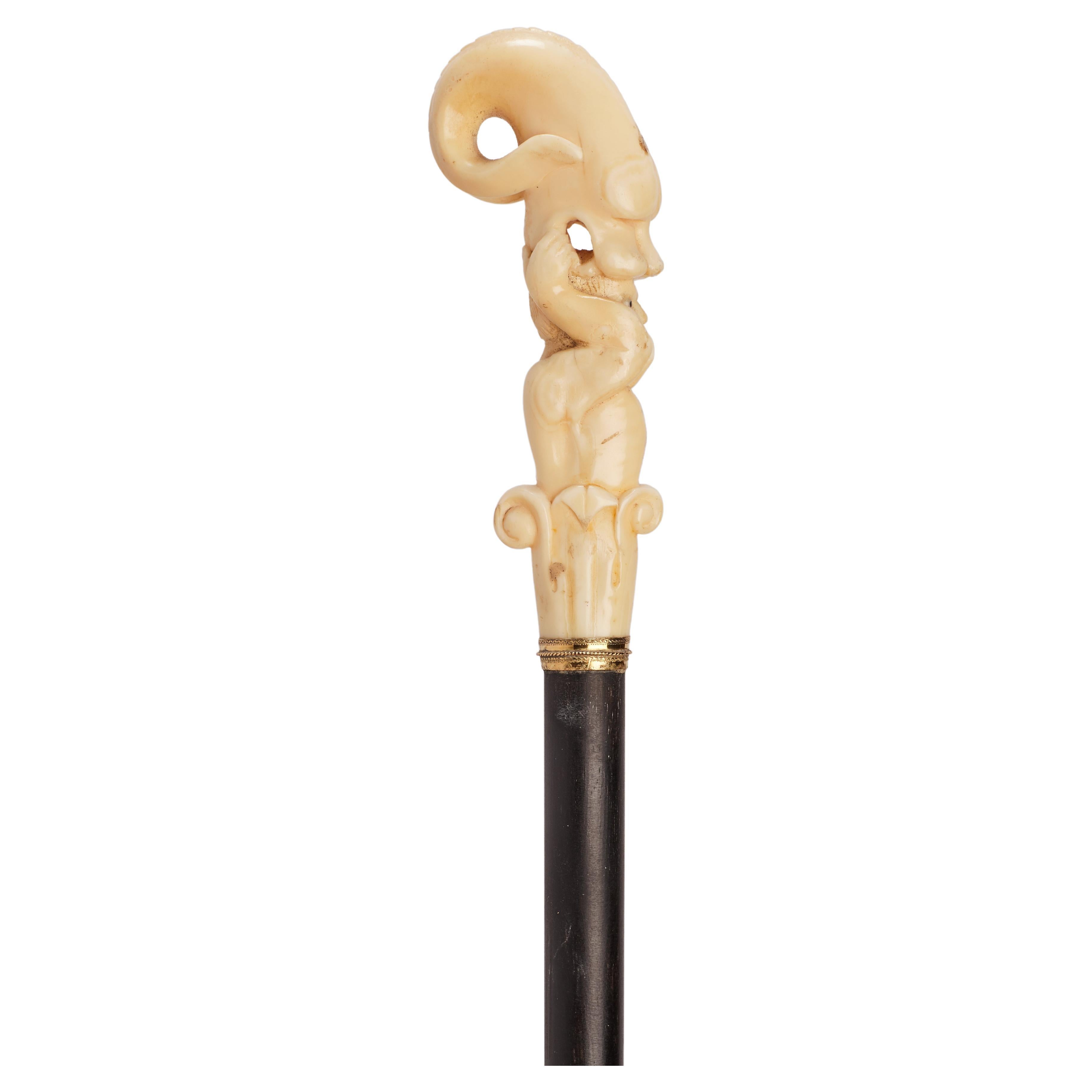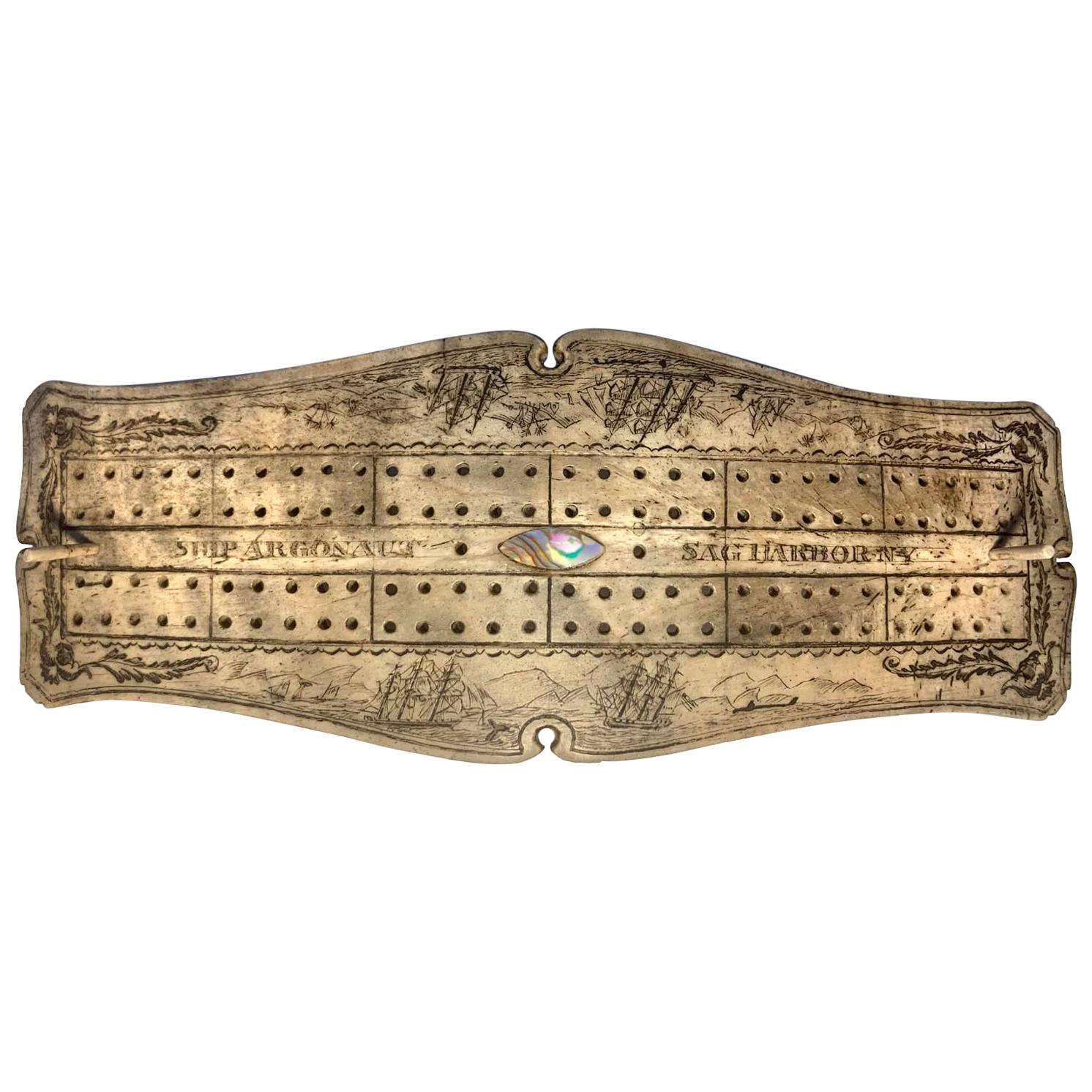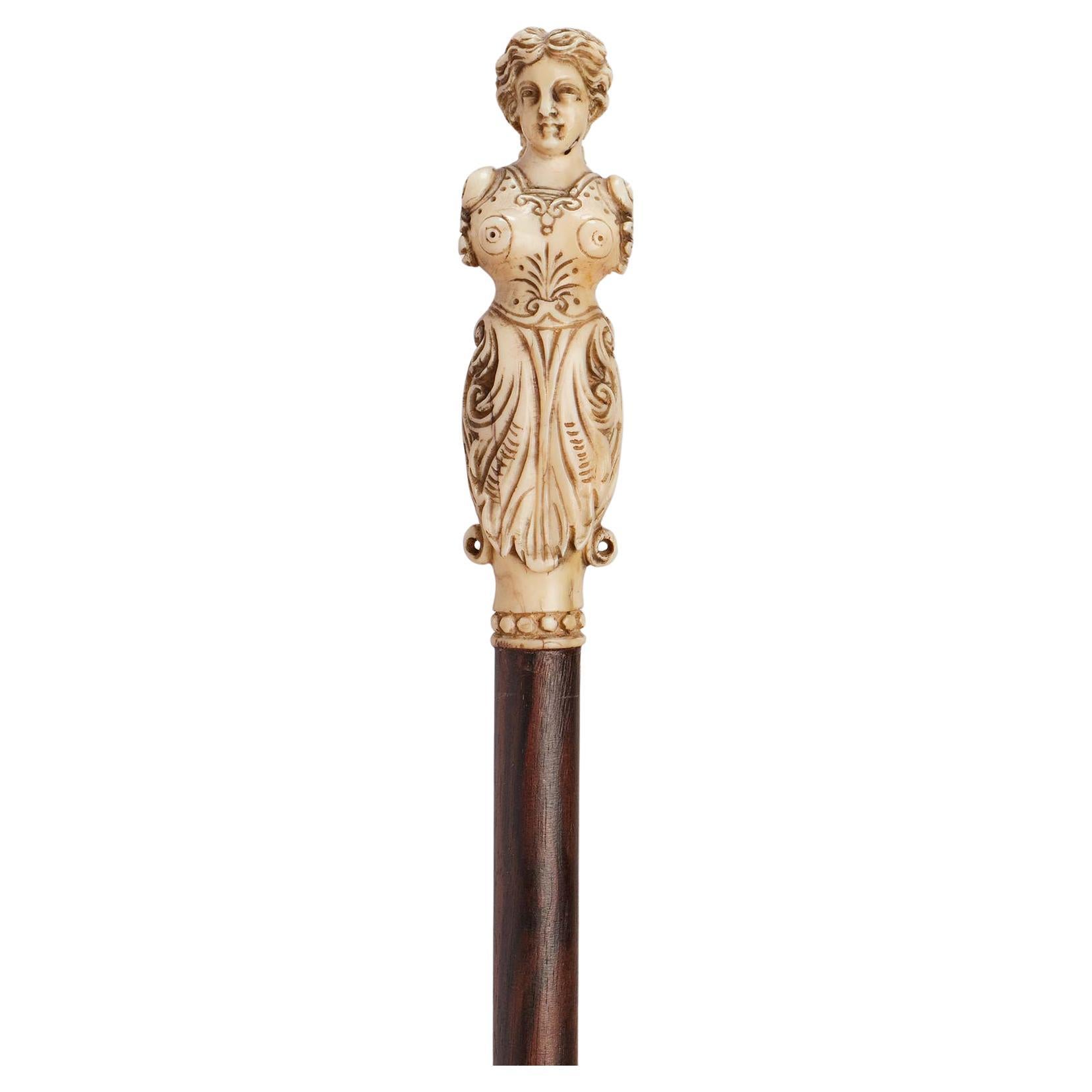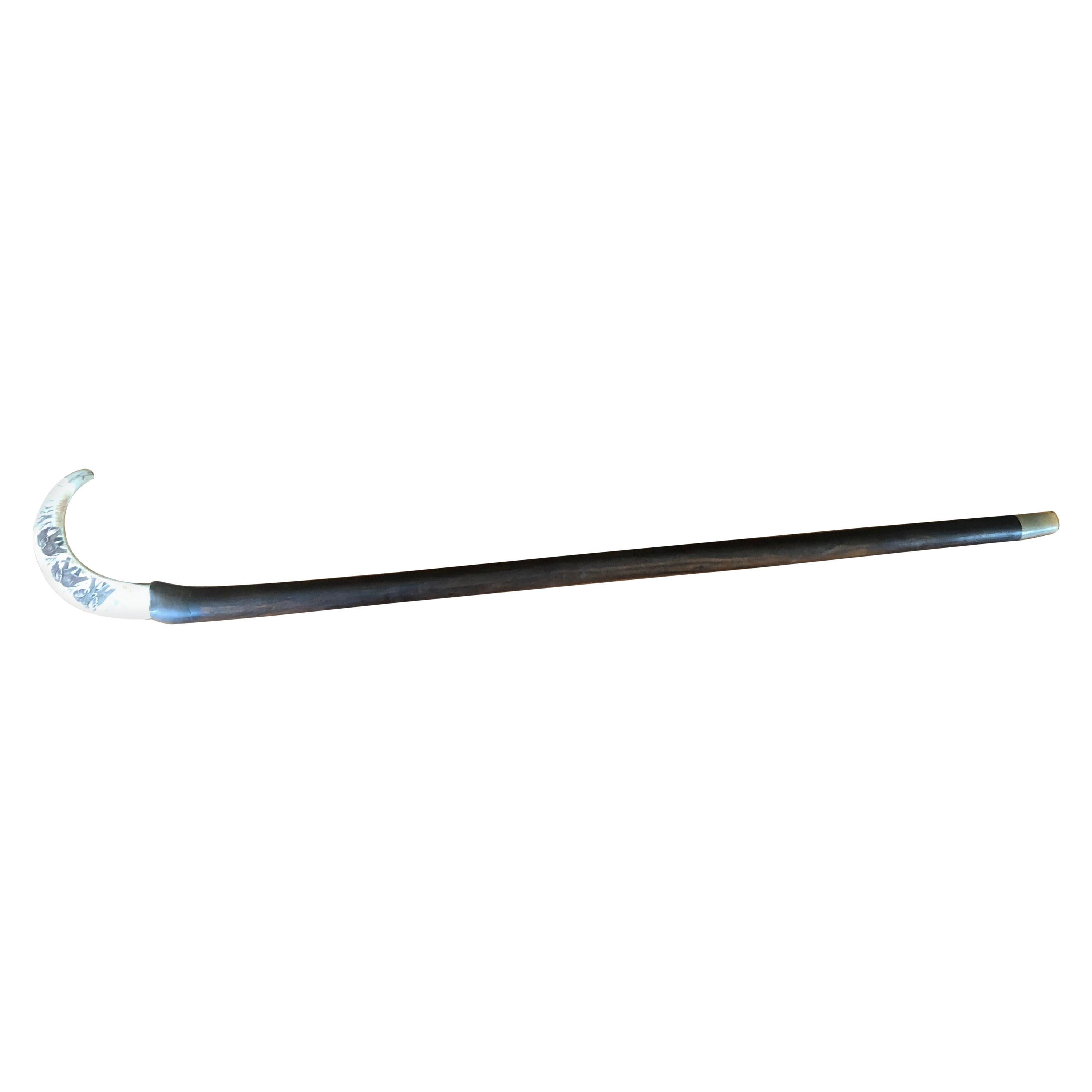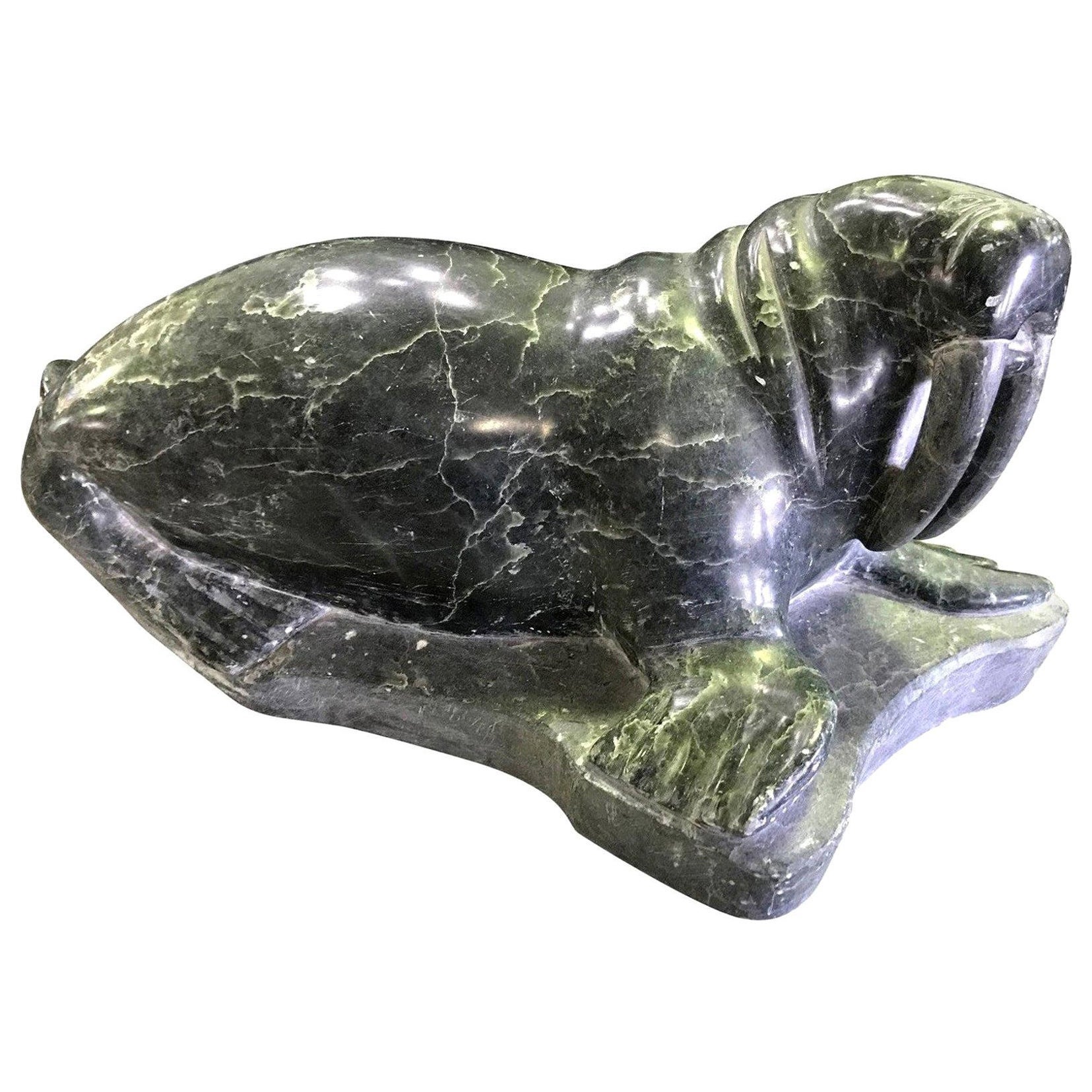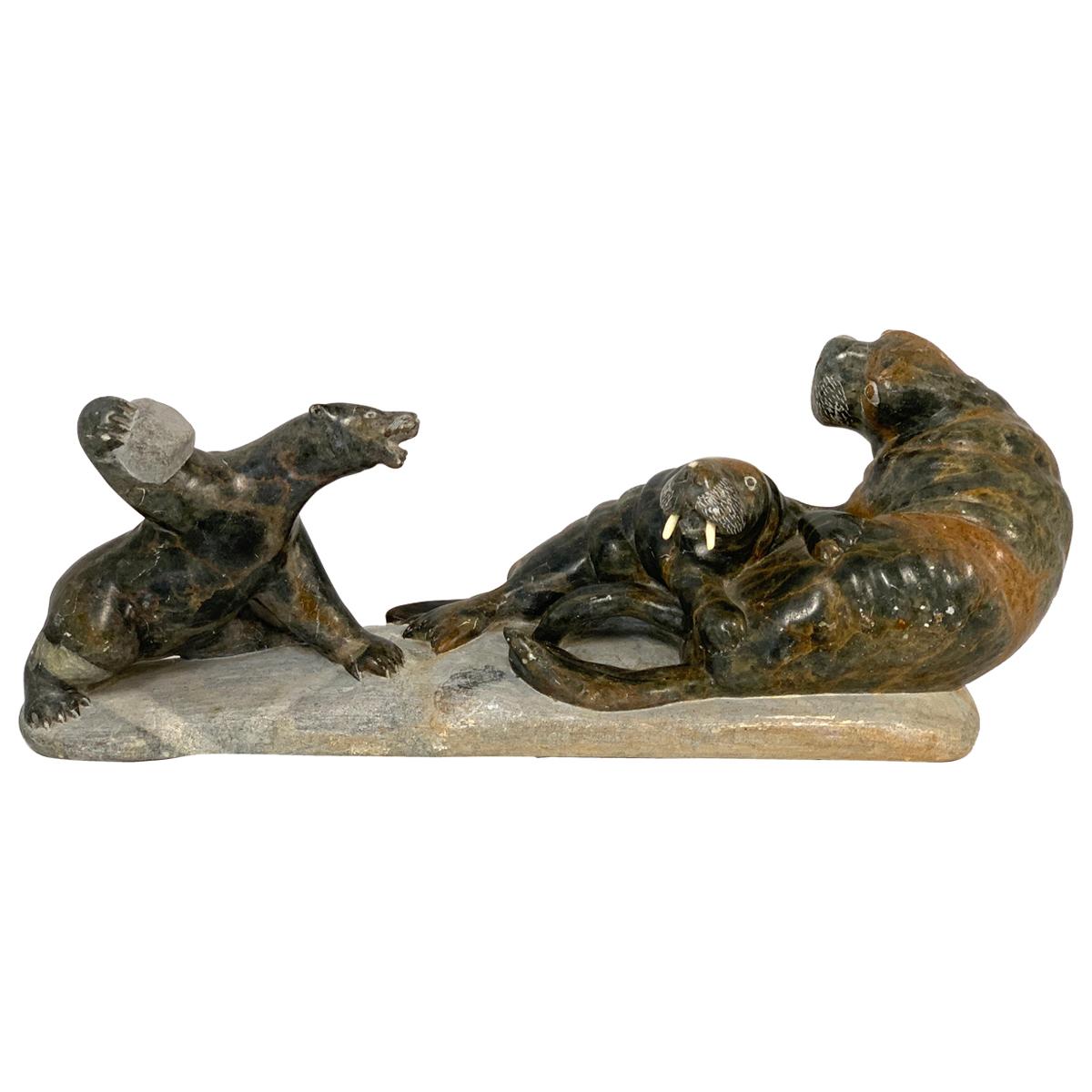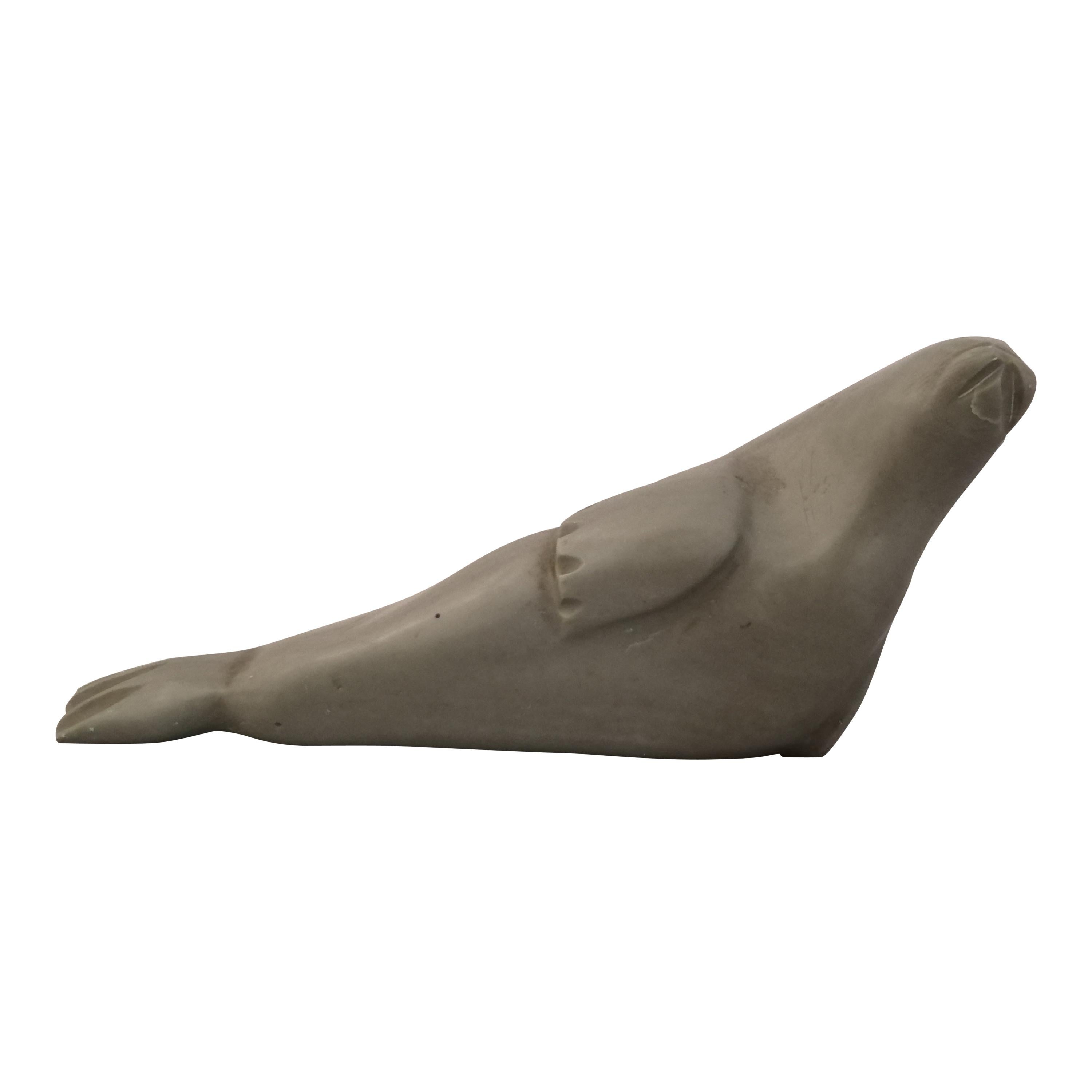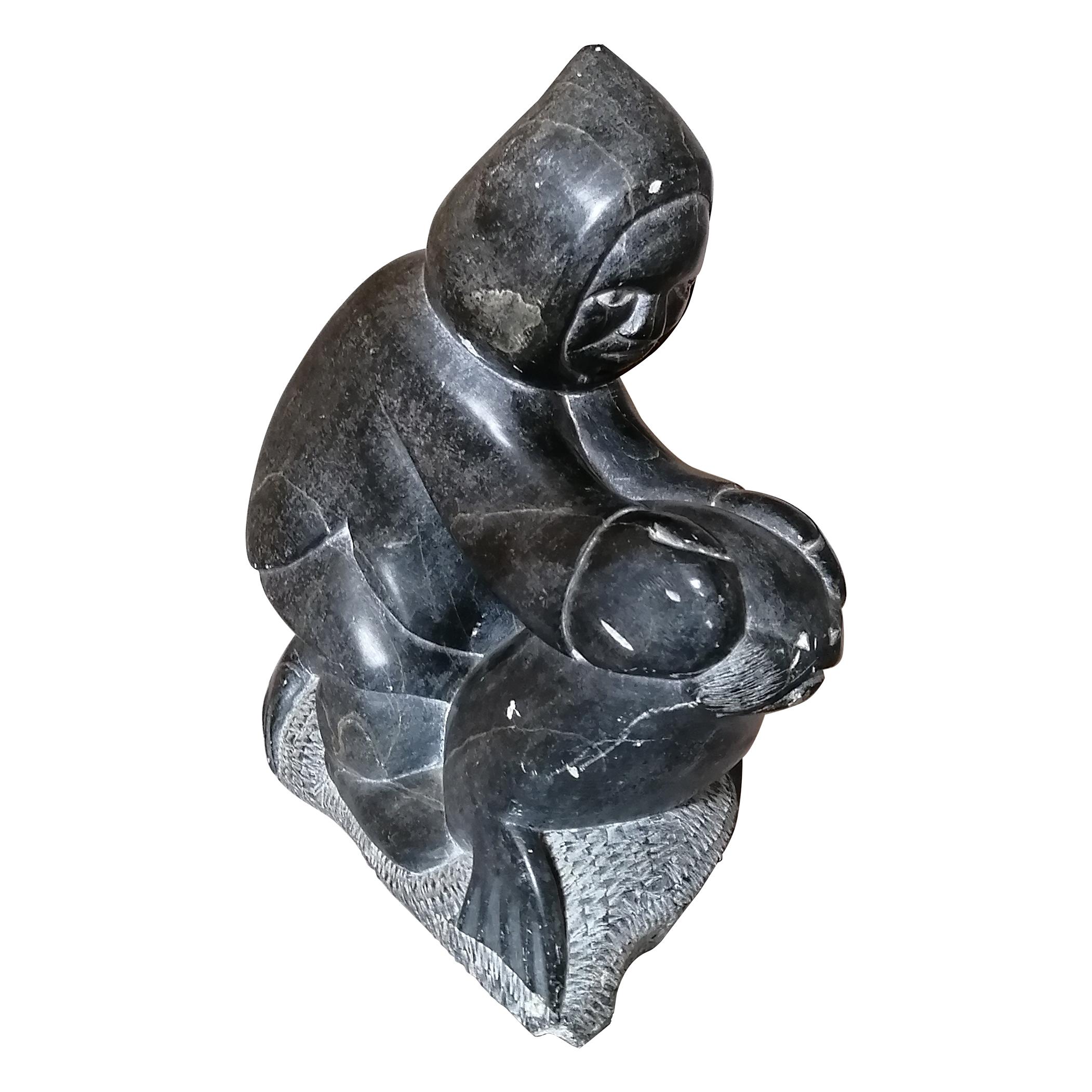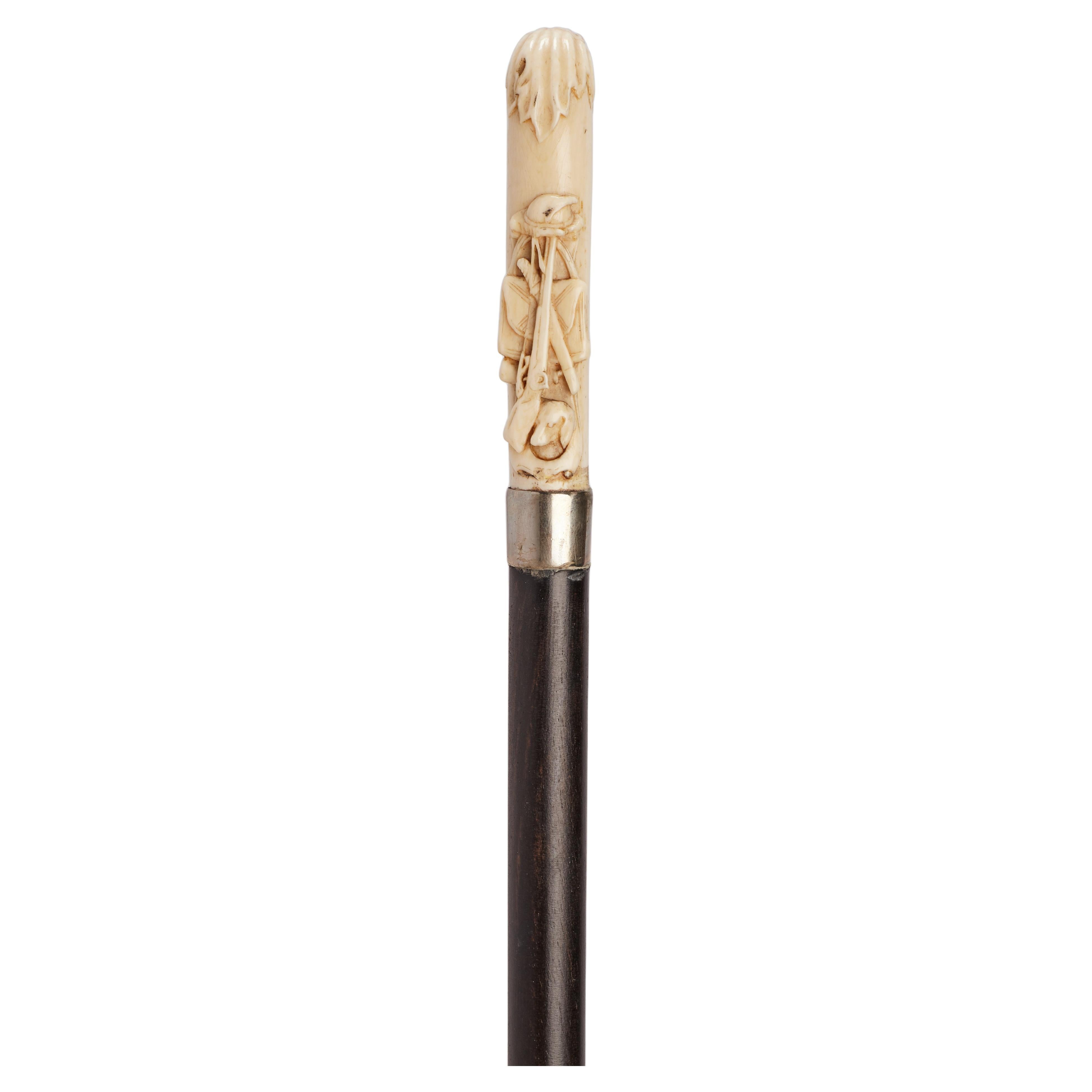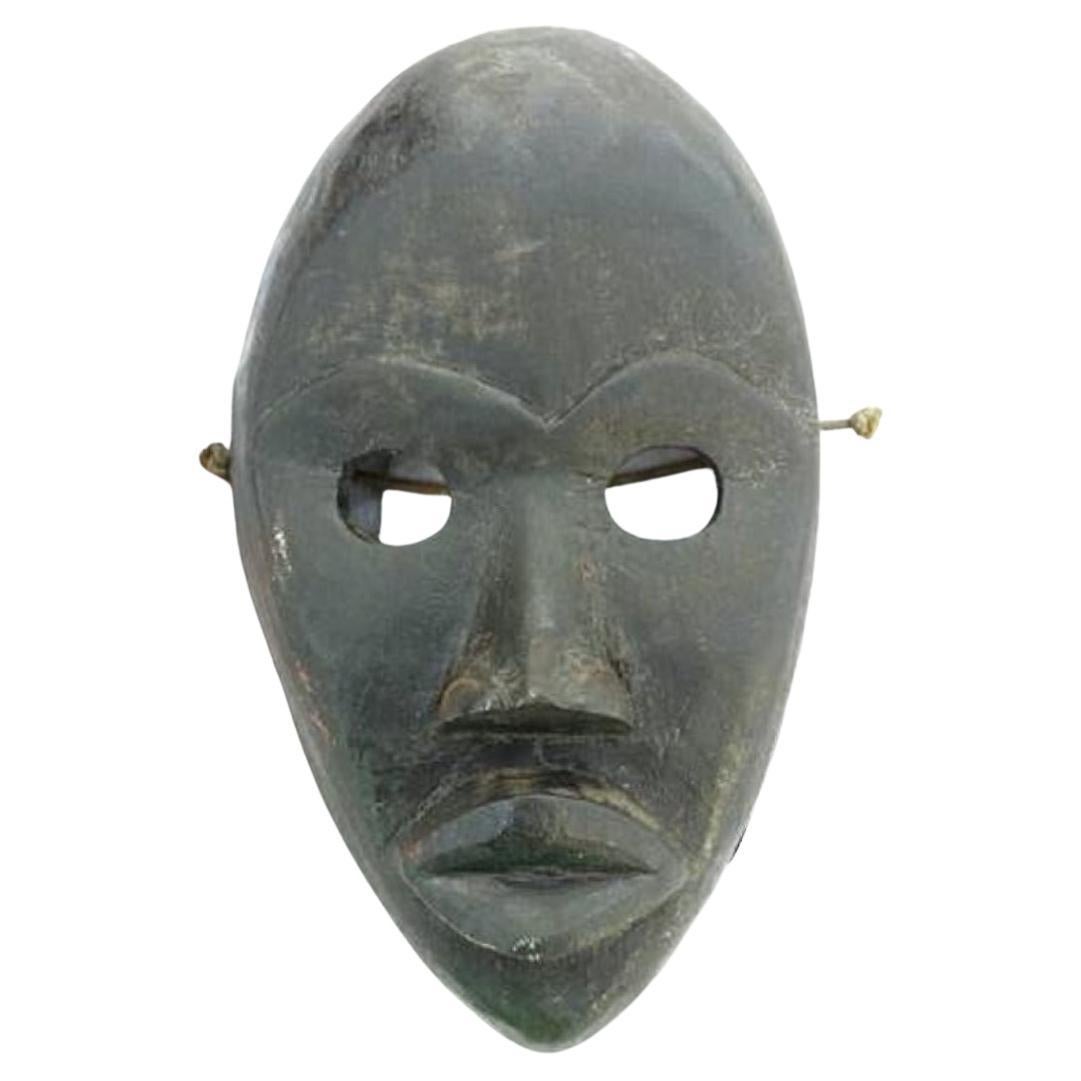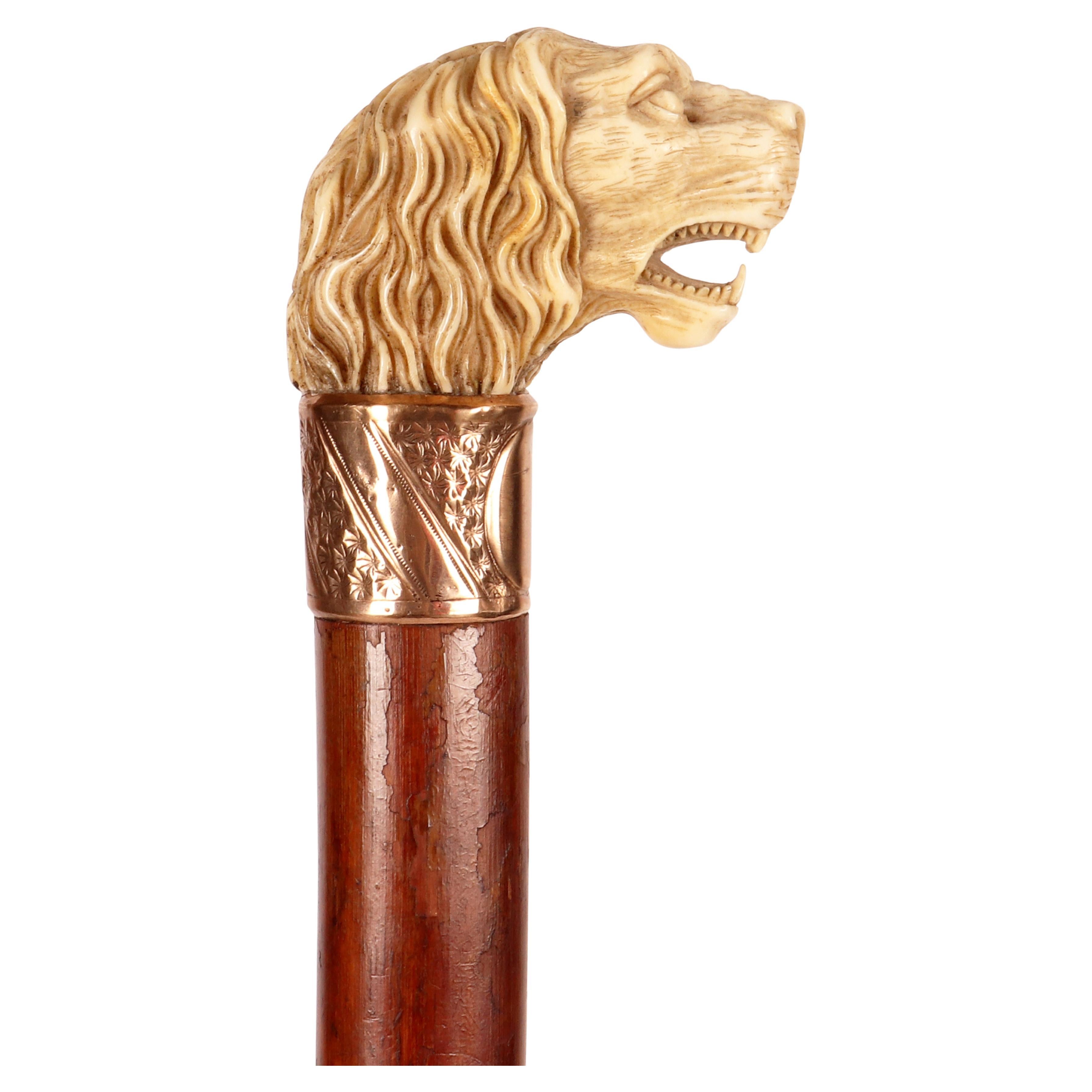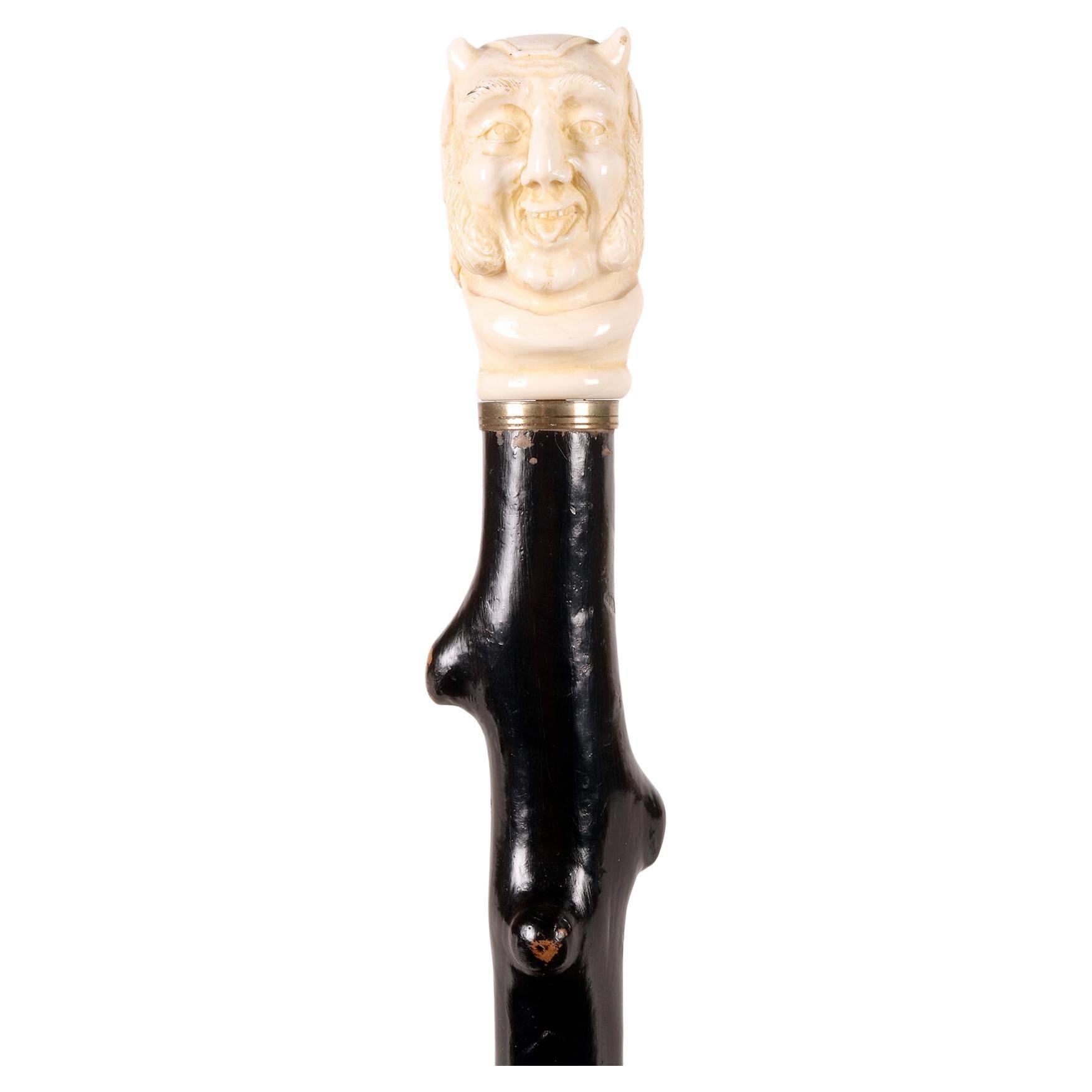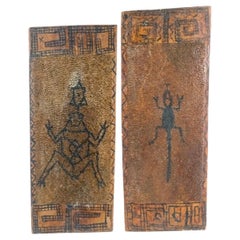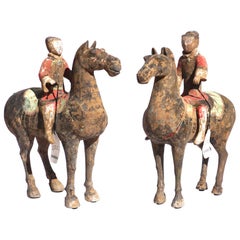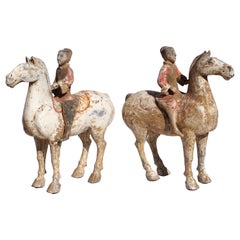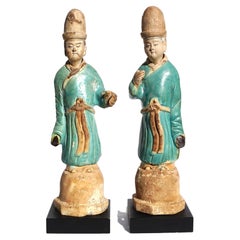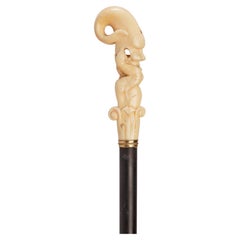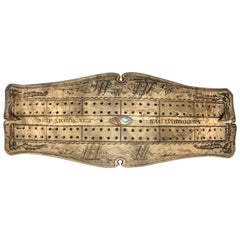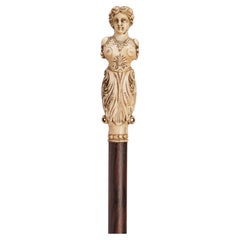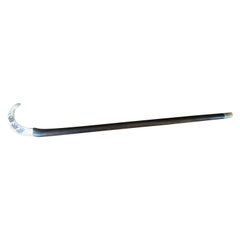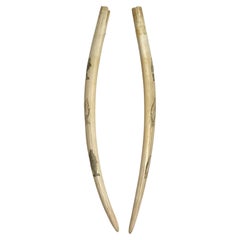
Pair Inuit Seal and Whale Scrimshaw Walrus Ivory Tusks
View Similar Items
Want more images or videos?
Request additional images or videos from the seller
1 of 12
Pair Inuit Seal and Whale Scrimshaw Walrus Ivory Tusks
Price:$2,900
$4,000List Price
About the Item
- Dimensions:Height: 2 in (5.08 cm)Width: 1.5 in (3.81 cm)Depth: 29.5 in (74.93 cm)
- Style:Tribal (Of the Period)
- Materials and Techniques:
- Place of Origin:
- Period:1900-1909
- Date of Manufacture:1900
- Condition:Wear consistent with age and use.
- Seller Location:Dallas, TX
- Reference Number:1stDibs: LU1774239343052
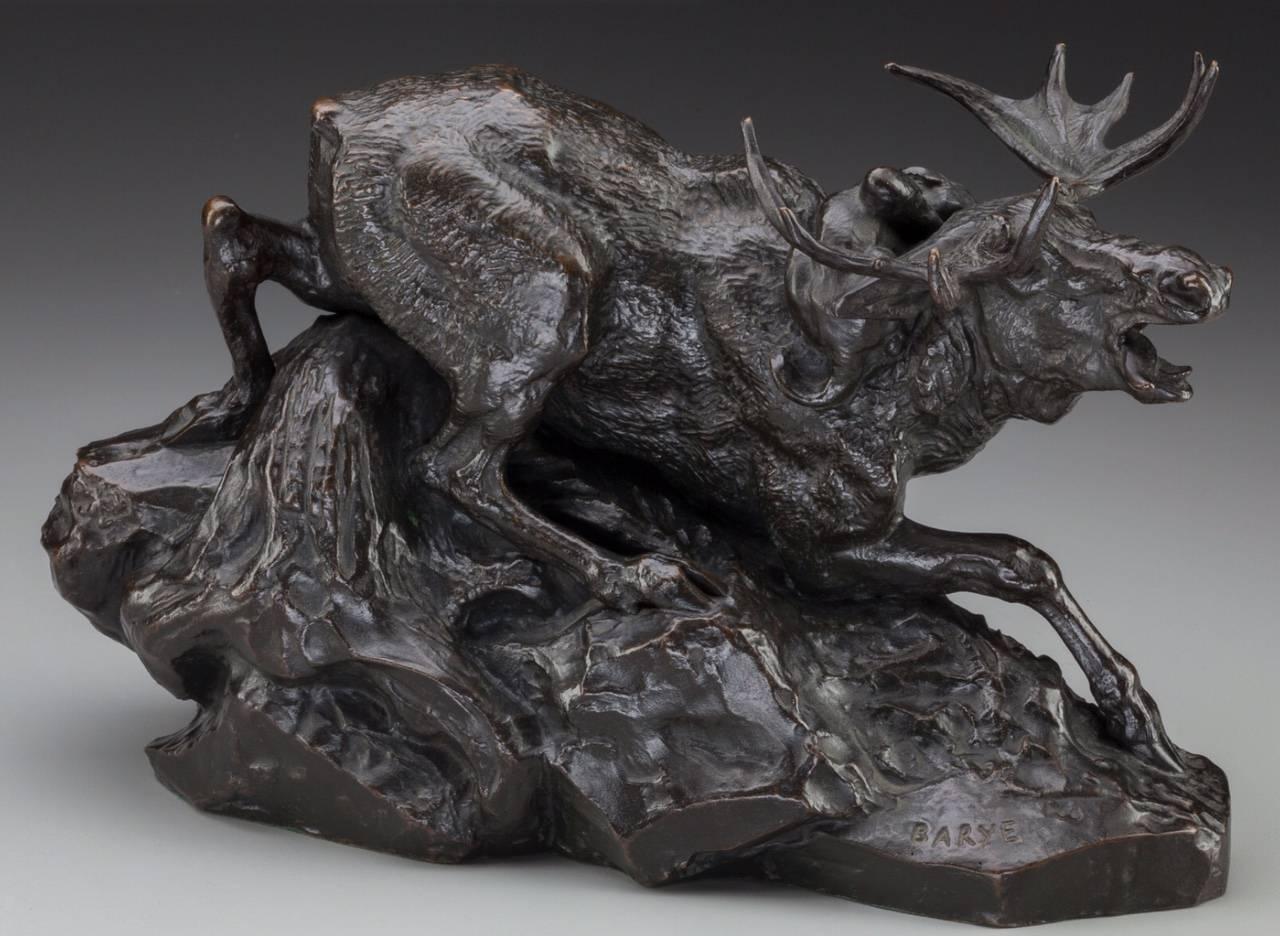
About the Seller
4.9
Gold Seller
Premium sellers maintaining a 4.3+ rating and 24-hour response times
Established in 2000
1stDibs seller since 2015
447 sales on 1stDibs
Typical response time: 11 hours
Authenticity Guarantee
In the unlikely event there’s an issue with an item’s authenticity, contact us within 1 year for a full refund. DetailsMoney-Back Guarantee
If your item is not as described, is damaged in transit, or does not arrive, contact us within 7 days for a full refund. Details24-Hour Cancellation
You have a 24-hour grace period in which to reconsider your purchase, with no questions asked.Vetted Professional Sellers
Our world-class sellers must adhere to strict standards for service and quality, maintaining the integrity of our listings.Price-Match Guarantee
If you find that a seller listed the same item for a lower price elsewhere, we’ll match it.Trusted Global Delivery
Our best-in-class carrier network provides specialized shipping options worldwide, including custom delivery.More From This Seller
View AllBrazilian Wai Wai Tribal Cassava Graters Circa 1945 Pair
Located in Dallas, TX
Brazilian Wei Wei Casava Graters
Two graters constructed of wood and sharpened rock used by the Wai Wai Indigenous tribe of Northern Brazil to process raw Cas...
Category
Vintage 1940s Brazilian Folk Art Antiquities
Materials
Stone
Pair of Han Dynasty Pottery Horses and Equestrian Riders
Located in Dallas, TX
A wonderful pair of Ex Sotheby’s painted Polychrome Equestrian Horse and Riders made from gray pottery, Presents beautifully and guaranteed authentic with provenance and COA.
Measures: Height 11.5 inches and width 11 inches
Condition: Possible professional restorations but not detectable.
Provenance: Sotheby’s London. 16th November, 1999. Lot 12 (2 of 4 horses in that lot).
Sotheby’s New York, NY September 14, 2019.
The importance of the horse in the history and culture of China can be viewed, in part, through the artistic legacy of this great civilization. In sculpture, painting, and literature, horses were glorified and revered. Horses were believed to be related to mythological dragons, reflecting their sacred status within society. During the unification of China under the Han Dynasty, bands of mounted nomadic warriors from the north threatened the country. In order to thwart their attacks, the Chinese sought to import stronger, faster steeds from Central Asia (as opposed to the Mongol ponies used by the invaders), eventually leading to the creation of the Silk Road. This small sculpture of a mounted soldier reveals the crucial military role of the horse. When compared to the diminutive stature of the rider, the importance of the horse becomes readily apparent. This creature provided security and strength, allowing the Empire to secure its borders and expand its influences across Central Asia. The magnificent regalia of the horse, including a brilliantly painted saddle in red and green/gold, reflect the respect this animal received. The warrior as well is gorgeously decorated with a painted red tunic and gray chest...
Category
Antique 15th Century and Earlier Chinese Chinoiserie Animal Sculptures
Materials
Pottery
Pair of Han Dynasty pottery Horses and Equestrian Riders
Located in Dallas, TX
A wonderful pair of Ex Sotheby’s painted Polychrome equestrian horse and riders made from gray pottery, presents beautifully and guaranteed authentic with provenance and COA.
Measures: Height 11.5 inches and width 11 inches
Condition: Possible professional restorations but not detectable.
Provenance: Sotheby’s London. 16th November, 1999. Lot 12 (2 of 4 horsed in that lot)
Sotheby’s New York, NY September 14, 2019.
AVANTIQUES is dedicated to providing an exclusive curated collection of Fine Arts, Paintings, Bronzes, Asian treasures, Art Glass and Antiques. Our inventory represents time-tested investment quality items with everlasting decorative beauty. We look forward to your business and appreciate any reasonable offers. All of our curated items are vetted and guaranteed authentic and as described. Avantiques only deals in original antiques and never reproductions. We stand behind our treasures with a full money back return if the items are not as described.
The importance of the horse in the history and culture of China can be viewed, in part, through the artistic legacy of this great civilization. In sculpture, painting, and literature, horses were glorified and revered. Horses were believed to be related to mythological dragons, reflecting their sacred status within society. During the unification of China under the Han Dynasty, bands of mounted nomadic warriors from the north threatened the country. In order to thwart their attacks, the Chinese sought to import stronger, faster steeds from Central Asia (as opposed to the Mongol ponies used by the invaders), eventually leading to the creation of the Silk Road. This small sculpture of a mounted soldier reveals the crucial military role of the horse. When compared to the diminutive stature of the rider, the importance of the horse becomes readily apparent. This creature provided security and strength, allowing the empire to secure its borders and expand its influences across Central Asia. The magnificent regalia of the horse, including a brilliantly painted saddle in red and green/gold, reflect the respect this animal received. The warrior as well is gorgeously decorated with a painted red tunic and gray chest...
Category
Antique 15th Century and Earlier Chinese Han Animal Sculptures
Materials
Pottery
Pair Ming Dynasty Glazed Pottery Dignitary Figures
Located in Dallas, TX
A pair of Ming dynasty sancai blue glazed pottery figures.
Circa 1500 AD Ming Dynasty
I have owned over 250 ming tomb figures including over 80...
Category
Antique 16th Century Chinese Ming Figurative Sculptures
Materials
Pottery
Green Glazed Shiwan Pottery Teapots Qing Dynasty, 'Pair'
Located in Dallas, TX
A near pair of 19th century Sancai green glazed pottery teapots. Both with yoked handles, spouts and lids. Both also have the Republic era official government wax red seal signifying...
Category
Antique 1880s Chinese Chinese Export Pottery
Materials
Pottery
Han Dynasty Pottery Horse and Rider
Located in Dallas, TX
Han Dynasty painted pottery horse and rider
A Chinese Han Dynasty painted pottery horse & rider. Made from grey pottery and cold-painted in white, red and black pigments. The rider dressed as a warrior and in the pose of holding reins for the horse. Comes with a custom sturdy lucite stand.
Measures: Height: 13.5 inches (33cm).
Length: 13 inches
Depth: 5 inches
Han Dynasty (206 BC – AD 220).
Condition: Very good with past restoration to legs.
The great influence of the horse throughout the history of China can...
Category
Antique 15th Century and Earlier Chinese Han Animal Sculptures
Materials
Pottery
You May Also Like
Walrus ivory handle walking stick depicts Jonah and the whale, Germany 1860.
Located in Milan, IT
Walking stick: walrus ivory carved handle, depicts Jonah and the whale. Ebony wood shaft. Sulphur glass eyes. Gold ring. Ivory ferrule. Germany circa 1860. (SHIP TO EU ONLY)
Category
Antique Mid-19th Century German Antiquities
Materials
Gold
Sag Harbor Whale Scrimshaw Cribbage Board
Located in Sag Harbor, NY
Authentic Scrimshaw carved into and antique tortoise shell with brass legs. Carved aboard the Ship Argonaut. A whaling ship from Sag Harbor New York from 1814-1832. The detailed carv...
Category
Antique Early 19th Century American Folk Art Antiquities
Materials
Tortoise Shell
$9,012 Sale Price
30% Off
Walrus ivory handle walking stick depicting a figurehead, France 1780.
Located in Milan, IT
Walking stick: carved walrus ivory knob, depicting a figurehead with leaves. Rosewood barrel. Carved walrus ivory ferrule. Dieppe, France circa 1780.
(SHIP TO EU ONLY)
Category
Antique Late 18th Century French Antiquities
Materials
Ivory, Rosewood
Antique Walking Stick with Horn Handle Adorned with Elephant Scrimshaw
Located in San Diego, CA
Fabulous antique walking stick with horn handle decorated with elephant scrimshaw, circa 1900. The handle is a curved horn with a pack of el...
Category
Early 20th Century American Antiquities
Materials
Hardwood, Horn
$1,000 Sale Price
20% Off
Inuit Native American Eskimo Signed Large Stone Carved Tusked Walrus Sculpture
By Native American Art
Located in Studio City, CA
A wonderful soapstone large, heavy carving of a tusked walrus by the indigenous inuit people who inhabit parts of the Arctic regions of Greenland, Canada, and Alaska.
Signed on th...
Category
Mid-20th Century Canadian Native American Sculptures and Carvings
Materials
Soapstone
Inuit Sculpture, Bear Attacking Walrus
Located in Palm Springs, CA
A whimsical large Inuit Eskimo carving in soapstone of a Bear holding a rock to throw at 2 Walrus. The tusks of one walrus are likely bone, and th...
Category
20th Century Canadian Native American Objects
Materials
Soapstone
$2,000 Sale Price
20% Off
